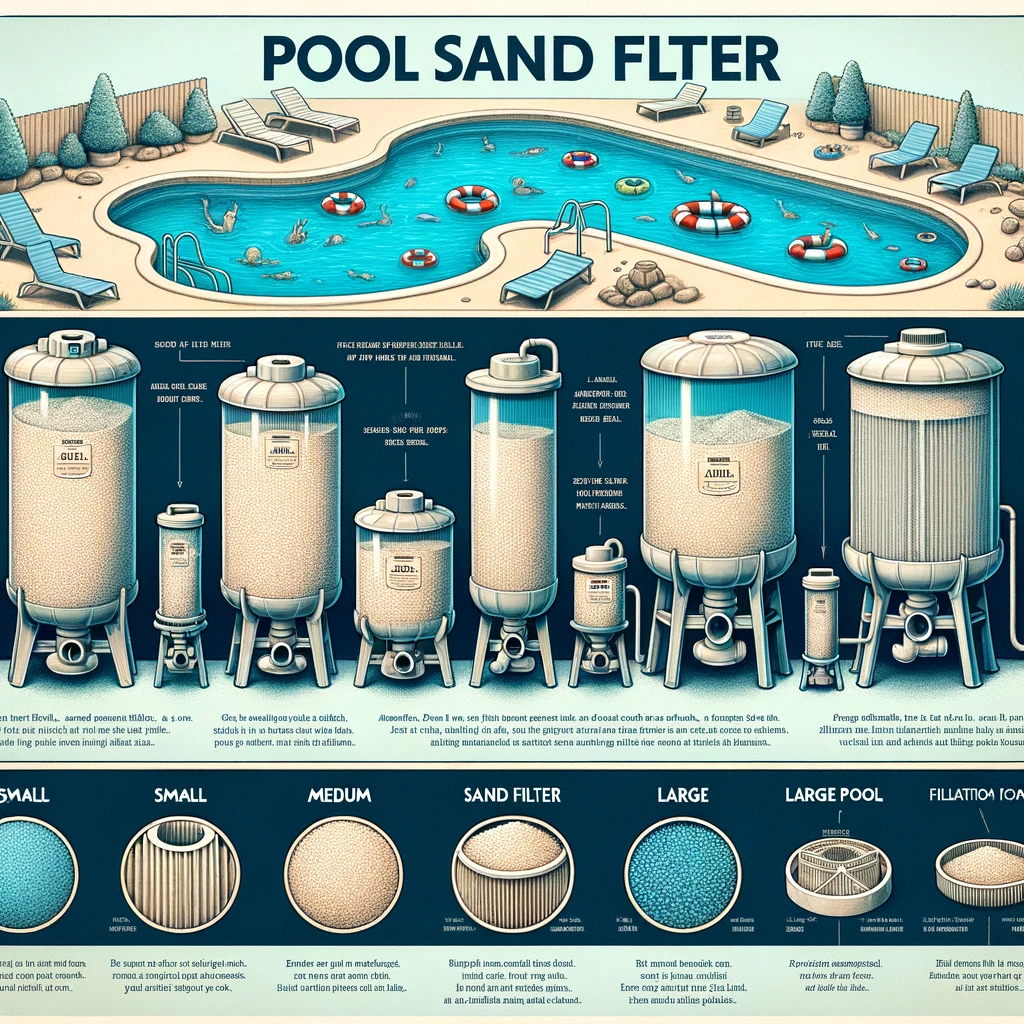The heart of a pristine swimming pool lies in its filtration system, and among the various options available, sand filters have emerged as a popular choice for their efficiency and reliability. This comprehensive guide aims to navigate you through the process of selecting the ideal sand filter for your pool, ensuring crystal clear water for an enjoyable swimming experience.
Understanding Sand Filters
Sand filters operate on a simple yet effective principle: water is pushed through a bed of sand, which captures and holds impurities and debris. There are different types of sand filters, including high-rate, rapid-rate, and gravity filters, each with unique characteristics. High-rate sand filters, commonly used in residential pools, offer efficient filtration at a faster rate. Rapid-rate filters, suitable for larger pools, provide thorough filtration over a larger area. Gravity filters, though less common, use the natural force of gravity for filtration and are known for their energy efficiency.
Key Factors to Consider When Choosing a Sand Filter
- Pool Size and Volume: It’s essential to match the sand filter’s capacity with your pool’s volume. For most residential pools, a turnover rate of 8 to 12 hours is ideal, ensuring the filter can process the entire pool volume within this period.
- Bather Load: The number of swimmers and the frequency of pool use significantly affect the filter’s workload. Pools with higher bather loads require robust filtration systems to handle the increased contaminants introduced during peak usage times.
- Filter Size and Flow Rate: The filter’s flow rate should be compatible with your pool’s pump capacity. A mismatch can lead to inefficient filtration or damage to the pump. Consulting with a pool professional can help determine the optimal flow rate based on your pool’s specific pump and plumbing specifications.
- Quality of Filtration Media: The type and quality of sand, or alternative media like glass or zeolite, are crucial for effective filtration. These alternatives can trap finer particles and reduce the frequency of backwashing.
- Location and Environmental Factors: The surrounding environment of your pool plays a significant role in filter selection. Pools in areas with higher levels of dust and debris might require more powerful filters to manage the additional workload.
- Ease of Maintenance: Sand filters are generally low-maintenance, but some models offer features that simplify maintenance tasks, such as easy backwashing procedures or indicators for filter cleaning. Choosing a filter that aligns with your maintenance capacity is important.
- Energy Efficiency: Energy-efficient models, while potentially more costly upfront, can offer long-term savings through reduced electricity usage. Considering the total cost of ownership, including energy consumption, is advisable when selecting a filter.
- Compatibility with Existing Systems: The new sand filter should be compatible with your existing pool system, including the pump and plumbing, to avoid additional costs or modifications during installation.
Installation and Maintenance Considerations
Installing a sand filter requires sufficient space and accessibility for maintenance. Regular tasks include backwashing, where water is flushed backward through the filter to clean out trapped debris. The frequency of backwashing and sand replacement depends on the filter usage and pool conditions. Proper installation and regular maintenance ensure the longevity and efficiency of the filter.
Budget and Cost-Effectiveness
While considering the initial investment, it’s also important to factor in long-term maintenance costs. Sand filters are generally cost-effective, with minimal operational costs. Their energy efficiency also contributes to reduced electricity bills.
Safety and Compliance
Compliance with local regulations and safety standards is paramount. NSF standards, for instance, provide a benchmark for filter performance and safety. Ensure the chosen sand filter meets these standards to guarantee a safe swimming environment.
Brand and Manufacturer Reputation
Opting for a reputable brand can make a significant difference in terms of product quality and after-sales support. Researching brand reputation, reading reviews, and understanding warranty terms can guide you in making a well-informed decision.
Case Studies and Examples
Real-world examples and case studies illustrate the effectiveness of different sand filters in various settings. These practical insights can be invaluable in understanding how a particular filter might perform in your pool.
Choosing the right sand filter for your pool is a decision that impacts the quality of your swimming experience. By considering factors such as pool size, bather load, filter size, and brand reputation, you can select a filter that not only maintains crystal clear water but also aligns with your maintenance preferences and budget.
